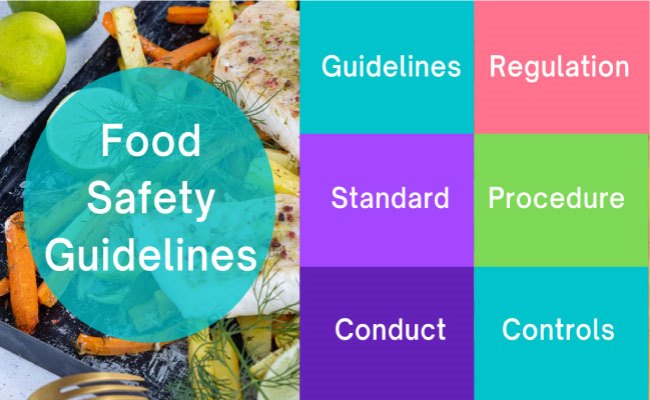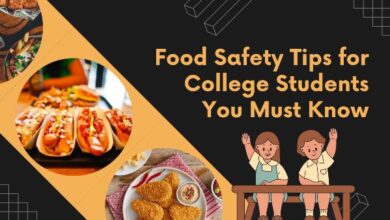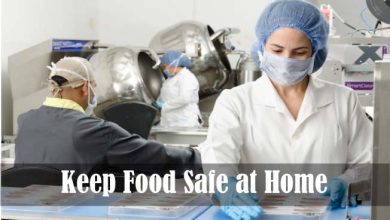7 Food Safety Guidelines for Successful Restaurants

Food safety should be at the top of your priority list if you are a restaurant owner. It might seem that tasty food is the number one concern among consumers. Still, modern-day customers are also aware of safe food wherever they eat. As a worldwide concern, you must know that, according to the USDA, nearly 48 million people get sick each year due to foodborne illnesses. And 420,000 people die every year from foodborne illnesses.
To ensure safe food, restaurants must follow strict guidelines set by the FDA. These guidelines cover everything from how employees handle raw meat to what they should do if their restaurant gets hit with a recall notice.
In this article, I will cover some of the quick food safety guidelines that you will find helpful if you are already in this business.
Establishing a Culture of Food Safety at Restaurants
Food safety culture refers to the behaviors and attitudes that affect how everyone, including managers, owners, and staff, thinks and performs about food safety. A healthy culture inside the restaurant ensures all related people interact with each other and keeps their environment safe around food.
A positive food safety culture inspires your staff members to take responsibility for their efforts to prevent foodborne illnesses. It starts from the top level. If the responsible upper management willingly follows the food safety guidelines, the people under them quickly follow their steps.
You can grow a positive food safety culture by providing your people with training opportunities, communicating expectations clearly, and rewarding good behavior.
Executing Food Safety and Hygiene Requirements
Food safety and hygiene are two terms that are often mistaken for each other. However, they are actually quite different. Food safety refers to the prevention of contamination of foods, while hygiene refers to the maintenance of cleanliness.
In order to ensure that food is safe, it should be free from any harmful microorganisms like bacteria, viruses, parasites, toxins, etc. Food safety is established through a whole process that starts with proper handling and storage practices.
On the other hand, hygiene focuses on keeping cleanliness inside the kitchen, serving, and storage areas. It includes all the work that ensures surfaces and equipment are kept clean at all times. For example, restaurant staff must wear clean aprons each shift, with hair covered by hair nets, and wash their hands often with soap.
Maintaining Proper Ventilation
At restaurants, ventilation allows fresh air to move over food preparation surfaces. A properly functioning ventilation system helps to increase food safety by removing odors and harmful bacteria. As per the FDA, vapors and fumes must be vented outside using the approved kitchen hoods by the National Fire Protection Association (NFPA). In short, you have to ensure the proper amount of exhaust recycling.
Remember, if the airflow is too low, the air may not circulate enough to remove odors and bacteria. On the other hand, too high airflow can cause drafts and cold spots inside the restaurant, which could lead to condensation problems.
Training Employees to Identify and Eliminate Risks
Risk identification is the first step toward risk management at a restaurant. It involves identifying food safety risks that exist inside and outside the restaurant and deciding if they pose a threat to the customers’ food. Employees at restaurants must be trained to make them able to recognize common causes of foodborne illnesses caused by unsafe food ingredients, storage deficiencies, half-cooked food, improper temperature, etc.
Their training must also include eradicating methods so that they can solve most of the day-to-day food safety issues.
Checking Food Shipments and Ensuring Quality
If you are in business, train your restaurant staff on how to check the packaging and receive only the suitable food materials. They must know that packaging should not only look good but should be sturdy enough to protect the product inside.
Then they should check the expiration date, which should be clearly visible on the package. If it isn’t, then don’t buy or accept it. The manufacturer sets expiration dates that may change or expire at any time. Always check the label carefully. Check the ingredients list carefully to see if any chemicals or additives need to be stored carefully.
Finally, it would be great if your staff were well informed about the nutritional value printed on the packages. Thus, they can help the cooks maintain a healthy recipe per the pre-planned charts.
And finally, each shipment must be carefully checked to see if products are without freshness or being carried under or over the required temperature.
Always Updated Ingredients Lists
You must have a complete list of all the ingredients you use in your restaurant, whether they’re food products or hygiene products. And those lists have to be accessible to all of your staff so that they know that the item will be short or will expire in a few days.
Another concern is that specific ingredients, like milk, eggs, and peanuts, are allergic to some people, which can be a health concern. Your cook and staff should be trained to understand the allergic level and how to use it to avoid allergic incidents.
Maintain Proper Food Controls
E. coli and salmonella are the two most dangerous bacteria for humans. And those are the culprits that cause a significant percentage of foodborne illnesses from restaurant foods. To prevent other harmful microorganisms, including E. coli and salmonella, proper food storage and temperature control are a must.
For example, keep raw meats on the bottom shelf while storing them inside freezers in a sealed container. Use separate utensils, cooking pots, and cutting boards to prevent cross-contamination. The same rules should be applied to fish and eggs also.
And all high-risk foods, including meats, must be cooked at 140°F to kill off the harmful bacteria.
Temperature control is also critical to maintaining safe food temperatures. High-risk foods should not be stored at temperatures above 140 degrees Fahrenheit (60 degrees Celsius) or below 40 degrees Fahrenheit (4 degrees Celsius). Try to avoid the danger zone of between 40°F and 140°F. If exposed to extreme temperatures, they can spoil faster and become unsafe to consume.
Final Thoughts
There are many principles that should be maintained in a restaurant. However, some of them are major enough to prevent foodborne illnesses. And those principles start with establishing a safe culture of cooking food at the right temperature and disposing of food correctly. I have addressed the major ones in this article with quick guidelines you can follow at your restaurant.



